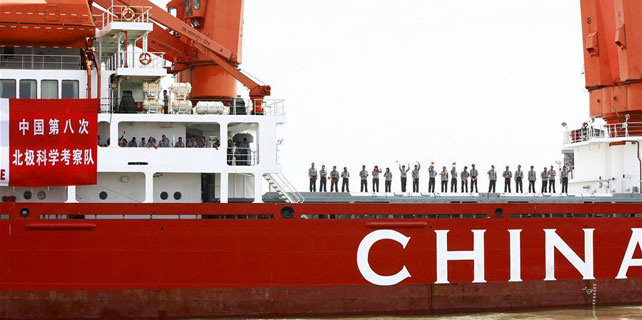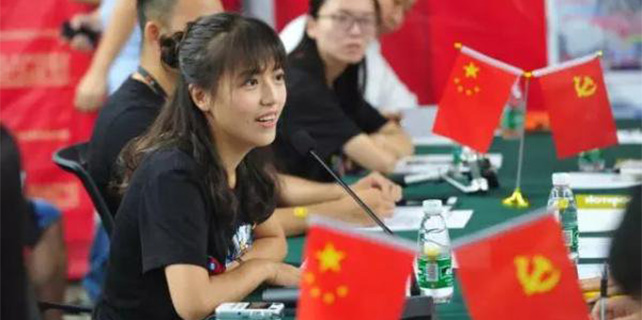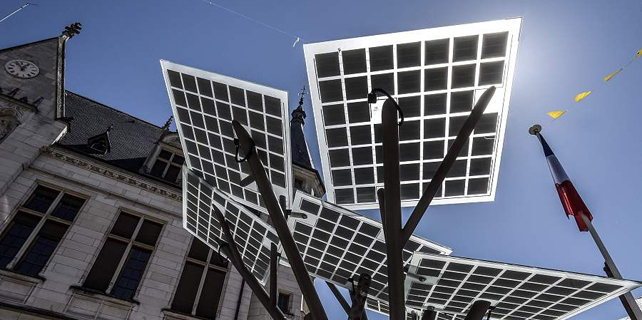Inaugural comprehensive economic dialogue charts right course for China-US
WASHINGTON — The just-concluded inaugural China-US Comprehensive Economic Dialogue (CED) has charted the right course for economic cooperation between the world's two largest economies as the two sides eye a one-year plan to deepen pragmatic cooperation and resolve outstanding problems.
Chart course for economic cooperation
"The two sides shared the view that the most important outcome of this round of dialogue is that it has charted the course for China-US economic cooperation," the Chinese delegation attending the one-day dialogue said in a statement after the conclusion of the talks Wednesday.
The two sides agreed to take "win-win cooperation" as the basic principle for developing bilateral economic relations, "dialogue and consultation" as the basis means to tackle differences, and "regular communication on major economic policies" as the basic way of dialogue and cooperation, the statement said.
Although the high-level talks, co-chaired by Chinese Vice Premier Wang Yang and US Treasury Secretary Steven Mnuchin and Secretary of Commerce Wilbur Ross, ended with no joint statements, Chinese Vice Finance Minister Zhu Guangyao described the talks as "very candid, very friendly and very constructive" with positive outcomes.
Both sides "spoke highly" of the significant and balanced outcomes achieved under the 100-day economic cooperation plan, an important consensus reached by Chinese President Xi Jinping and his U.S. counterpart Donald Trump during the Mar-a-Lago meeting in April, Zhu said at a press briefing on Wednesday.
Major outcomes of the 100-day plan includes US beef returned to the Chinese market after 14 years of suspensions, and policy restrictions on US liquefied natural gas exports to China began to be loosened.
After the US presidential election last year, many fretted that China-US trade relations would "enter a stormy season of winter and even run the risk of a trade war," Wang recalled Tuesday at a luncheon to the Chinese and US business communities.
But the recent fruitful cooperation between the world's largest two economies has proven that China-US economic cooperation is sailing on the right course, he said.
The CED is one of the four major dialogues the two sides established in April. The first round of the dialogue allows the two sides to focus not only on concrete economic and trade issues, but also on long-term and strategic policies that are important to bilateral economic relations.
One-year cooperation plan
China and the United States discussed a one-year plan of economic cooperation in areas such as macro economy, trade, investment, and global economic governance during the dialogue, Zhu introduced.
Both teams would take follow-up actions to identify issues of the one-year plan, and look forward to determining the substance of an early harvest as soon as possible, he said.
"I don't think there's been enough negotiation to have a lot of concrete results," David Dollar, a senior fellow at the Brookings Institution and former official with the US Treasury Department, told Xinhua, expecting the two sides to develop specific plans within the year.
He also noted that a high-quality US-China bilateral investment treaty would help US export its services to China and build a foundation for a better bilateral trading relationship. "The US primarily exports services. It's hard to export services if you cannot invest," he said.
China has agreed to further open up its service sector and expand bilateral trade in services with the United States, as the country is shifting its economy toward a growth model powered by consumption, services and innovation.
"Despite a huge deficit in services trade with the United States, China nevertheless believed that trade in services between China and the United States is mutually beneficial," said the statement from the Chinese delegation.
Given the differences between China and the United States in the size and structure of their services industry, it remains possible for both sides to exploit their own comparative advantages and complement each other, the statement said, adding that "expanding bilateral trade in services can also promote balanced trading relations between the two sides."
In order to address trade imbalance, a top priority of the Trump administration, China has also urged the United States to remove its outdated regulations on export control and increase the exports of high-tech products to China, said Zhu, stressing that China will push for this demand in the one-year plan.
If the United States were to liberalize its export barriers against China to the same level as those applicable to Brazil or France, the US trade deficit with China would narrow by up to 24 percent and 34 percent respectively, according to a research from the Carnegie Endowment for International Peace.
Steel excess capacity
Talks on steel excess capacity between China and the United States are watched closely by the international community as the Trump administration is about to release a report on the national security implications of steel imports in the coming weeks.
China shared the same view with the United States that steel overcapacity is a global issue, which requires a global collective response, Zhu said, adding China also emphasizes that the excess steel capacity has been a result of sluggish global economic recovery.
Meanwhile, the Chinese delegation told the US side that China has actively taken measures to cut steel overcapacity, Zhu said, citing China's plans to reduce steel capacity by 100 million to 150 million metric tons from 2016 to 2020.
In defense of the US steel industry, the Trump administration in April invoked a decades-old, rarely used trade tool, known as a Section 232 investigation under the Trade Expansion Act of 1962, to look into all foreign steel imports.
If the investigation concludes that steel imports would undermine US national security, the trade law would allow the US government to impose tariffs, quotas, or other measures to restrict the imports.
"I think an honest assessment of the national security issue would conclude that there is no national security issue because we mostly produce steel ourselves or we get it from Canada and Mexico, which are close allies of the United States," said Dollar.
In his view, it won't have much effect on China if the Trump administration imposes new tariffs on imported steel, as the United States only imports "a tiny percentage of" steel from China.
As the world's two largest economies and co-chairs of the Global Forum on Steel Excess Capacity, China and the United States have maintained policy dialogue and communication regarding the steel glut, according to Zhu.
At the G20 summit in Hamburg, Germany earlier this month, G20 leaders called on the forum to fulfill their commitments on enhancing information sharing and cooperation by August, and to rapidly develop concrete policy solutions that reduce steel excess capacity, he added.
- First China-US Comprehensive Economic Dialogue sees some positive outcomes
- China-US economic dialogue lack of progress due to excessive US demands: Sputnik
- Cooperation key to rebalancing China-US trade
- China, US agree to bolster trade in civilian high-tech sectors
- China, US to address trade imbalance, official says
















